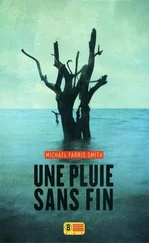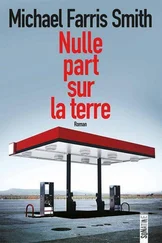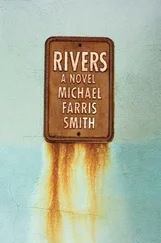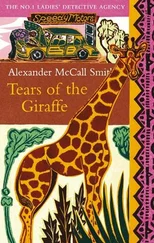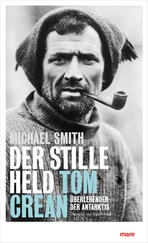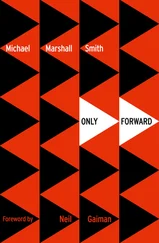James clapped his hands together. ‘Yes, let’s see it. I can’t wait. Ooh!’
William smiled at the Ooh.
‘Before you get it,’ said Caroline, ‘tell us where you found it.’
‘In a wardrobe,’ said Marcia.
The two students looked at her in astonishment, while William went out of the room to fetch the painting from his study. When he came back, he held it turned away from them. ‘Close your eyes,’ he said.
They did, and he turned the painting round. They’ll say something disparaging, he thought; a cheap nineteenth-century souvenir of the Grand Tour - something like that.
‘Open your eyes now.’
James let out a gasp. Then he muttered, ‘ Caspita! ’
‘Who was he?’
James looked up at William. ‘Sorry. He wasn’t an artist - caspita is an Italian exclamation. It expresses how I feel looking at . . . looking at this painting.’
And you? thought William, turning to gauge Caroline’s reaction.
Caroline said nothing at first. Then, glancing at James, she frowned. A shadow came over her and it was as obvious to William as a thundercloud in the sky. He looked again at James, who had reached out to take the small painting from William’s hands and was holding it out in front of him. There was no shadow there - just astonishment, and unmistakable, spontaneous delight.
William gazed intently at James as he studied the painting in front of him. Marcia watched him too, and even Freddie de la Hay, his disgrace forgotten, looked on with interest.
‘First impressions,’ said James, ‘are so important. You look at a good painting and bang , it’s there. You just feel it.’
‘It’s the same with wine,’ William said. ‘You know when you first experience it when it’s a great wine. It can change in the glass, of course, but that first encounter leaves you in no doubt. I tasted a 1961 Médoc the other day. The balance!’ He paused. ‘But I’m distracting you.’
James looked up and smiled. ‘Not at all. I like talking about wine too. It all involves aesthetics. And isn’t it amazing how things survive? There’s your wine, in its fragile bottle, surviving almost fifty years, and here’s this painting, in pretty much the condition it was when it left Poussin’s studio . . . Except the colours in just about all Poussins have faded rather badly.’
‘Poussin!’ exclaimed Caroline.
James turned to her and smiled triumphantly. ‘Yes, Poussin. Nicolas Poussin.’
Caroline, who had leapt to her feet in her excitement, now sat down again. ‘I don’t believe it,’ she muttered.
‘You don’t?’ asked Marcia. She wondered whether she should have been incredulous too. The problem, though, was that she was not sure who Poussin was. Picasso, yes. But Poussin?
It was as if James sensed Marcia’s embarrassment. ‘Don’t worry,’ he said. ‘Lots of people aren’t all that familiar with Poussin. There are so many painters!’
That helped. ‘Is he important?’ Marcia asked.
James nodded. ‘Immensely. He was a great classical painter. He disapproved of other French painters of his time and went off to Rome. He did some wonderful paintings.’
William was frowning. ‘Do you really think that this is by him? And how can you tell?’
James placed the painting on the table in front of him. ‘It’s a question of style - principally. When you get to know an artist’s work, you’ll always recognise it - in much the same way as you’ll recognise a face. It’s just there, the flow and feel, the way of looking at the world - everything. It’s like a signature.’ He turned to William. ‘It’s the same with your wine, surely? You know where a wine comes from when you first taste it. You may not be able to put your finger on the exact reason, but you know, don’t you?’
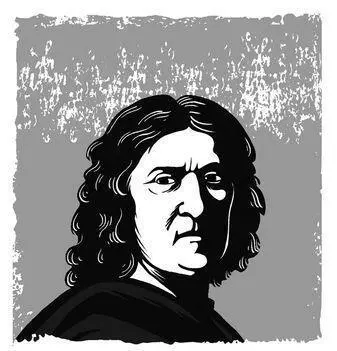
William agreed. But how could one tell, he wondered, whether something was the real thing, as opposed to an imitation or a copy? He raised this doubt now. ‘What about that chap who did the Vermeers during the War? If he could churn out Vermeers, then surely there could be somebody doing Poussins - in the same convincing way?’
James reached out and touched the picture lightly with his fingertips. ‘Of course you’re right,’ he said. ‘This could be a copy by a follower of Poussin. A very good follower. It could be of the period, or it could be by a modern forger. It could be anything. But to me it looks like a Poussin - a very small Poussin. Mind you, I’m no expert . . .’
‘James is only a student,’ Caroline pointed out. ‘Nobody will listen to a student.’
‘We’re listening,’ said Marcia.
James smiled. ‘Thank you. But Caroline’s right. My opinion counts for nothing. We need to show it to somebody whose attribution will stand for something. We need to find an authority on Poussin.’
‘Can you do that?’ asked Marcia. ‘Can you just approach somebody out of the blue like that?’
‘Of course,’ replied James. ‘That’s what these people are there for. And there’s bound to be a Poussin expert in London. There was Anthony Blunt, of course, at the Courtauld . . .’
William looked up sharply. ‘The Fourth Man?’
James sighed. ‘That’s right. He’s dead now, of course. And people seem only to remember the fact that he was a spy. They don’t remember what he did for Art History. Or for the Courtauld Institute. Or for all the students he helped.’
William raised an eyebrow. ‘He spied for one of the greatest tyrannies the world has ever known,’ he said. ‘He lived in a democracy but spied for a tyranny.’
James was cautious. ‘He believed in his cause, I think. People really believed in communism; they thought that it was the only possible way out. And once he was recruited - as a young man - it might have been difficult to escape. I can imagine how easy it was to find oneself on the wrong side and then . . .’
William thought for a moment. ‘Yes. It’s not as simple as people think it is.’
‘It never is,’ said Marcia.
‘Yet I don’t condone what he did,’ added William.
‘Nor do I,’ said James.
They looked at Caroline. ‘He had no real excuse,’ she said. ‘What a mess he made of his life. And then he was publicly humiliated.’
‘Even if what he did seemed unforgivable,’ said William, ‘perhaps we should still have forgiven him.’
‘Well, we can’t ask Blunt,’ concluded James. ‘But there’s bound to be someone. So what do you want us to do, William?’
Marcia now made a suggestion. ‘We’ve shown them the painting,’ she said to William, talking as if Caroline and James were not in the room. ‘I think we should tell them about how we came to have it. About whose wardrobe it was in and so on. Then we can all decide what to do.’
Caroline had already guessed. ‘It was Eddie’s wardrobe, wasn’t it?’
William confirmed this, and added, ‘I think . . . well, I have to say that I think it’s stolen - how else would it be here?’
‘He may have bought it in an antique shop,’ ventured Caroline. ‘Sometimes you see paintings hanging up in such places. They often have no idea what they’ve got.’
William thought this unlikely. ‘Those characters - the dealers - know what’s what. If they see anything remotely interesting, they show it to an expert. It’s inconceivable these days that any antique dealer would let something like this slip through their fingers.’ He paused. He had more to say on the subject of the painting’s provenance. ‘I should tell you, by the way, that I found a site on the web. It lists stolen paintings, and there was nothing by Poussin, I’m sure. So—’
Читать дальше


